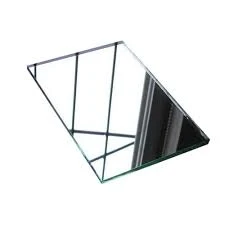

The Vibrant World of Decorative Glass Manufacturers
In recent years, decorative glass has emerged as a favored choice for both functional and ornamental design in a variety of industries. From architecture to home decor, decorative glass serves as a medium that combines artistry and utility, capturing light, colors, and textures in ways that few other materials can. This article explores the realm of decorative glass manufacturers, highlighting their significance, capabilities, and the innovative techniques they employ.
Understanding Decorative Glass
Decorative glass encompasses a vast array of products, including stained glass, etched glass, and colored glass, among others. It can be used in windows, doors, partitions, and furnishings, presenting opportunities for creativity and personalization. The beauty of decorative glass lies not only in its aesthetic appeal but also in its versatility. It can complement a wide range of design styles, from classic to contemporary, ensuring its relevance across different markets.
The Role of Decorative Glass Manufacturers
Decorative glass manufacturers play a pivotal role in this thriving industry. They are responsible for taking raw materials, such as silica sand, soda ash, and limestone, and transforming them into exquisite glass products. This process requires not only technical expertise and advanced machinery but also a keen sense of design and understanding of market trends.
These manufacturers often collaborate closely with architects, designers, and builders to develop custom solutions tailored to specific projects. By working in tandem with industry professionals, they can ensure that their products meet both functional requirements and aesthetic desires.
Techniques and Innovations
1. Stained Glass This timeless technique involves adding colored glass to windows or installations, creating breathtaking visual effects. Modern manufacturers utilize computer-aided design (CAD) to create intricate patterns and ensure precise color matching that can enhance the beauty of any space.

2. Etched Glass Through chemical or sandblasting processes, decorative glass manufacturers can etch detailed designs onto the surface of the glass. This technique allows for a subtle yet impactful addition to interiors, providing both privacy and elegance. Etched glass is commonly found in office partitions, shower doors, and decorative panels.
3. Laminated Glass This innovative method involves layering glass with interlayers of plastic or other materials. Laminated glass offers enhanced safety, sound insulation, and UV protection, making it a popular choice for both residential and commercial applications.
4. Fused Glass This technique involves melting different pieces of glass together at high temperatures, allowing for stunning patterns and colors. Fused glass can be created into various forms, such as decorative tiles, sculptures, and functional items.
5. Digital Printing With advancements in technology, decorative glass manufacturers have started using digital printing techniques to create custom images and designs on glass surfaces. This allows for unlimited creative expression and the possibility of producing unique products on demand.
Sustainability in Decorative Glass Manufacturing
As environmental concerns continue to grow, many decorative glass manufacturers are taking steps toward sustainability. They are increasingly using recycled materials in their production processes and employing energy-efficient technologies to reduce their carbon footprint. This shift not only helps preserve natural resources but also appeals to eco-conscious consumers seeking sustainable design options.
Conclusion
The world of decorative glass manufacturers is marked by creativity, innovation, and collaboration. As they continue to push the boundaries of design and technology, decorative glass will undoubtedly remain a popular choice for interior and exterior applications alike. Whether enhancing the aesthetic of a luxurious hotel lobby or adding a unique touch to a cozy home, decorative glass products can illuminate any space, making them essential components in the fabric of modern architecture and design. With ongoing advancements and a commitment to sustainability, the future of decorative glass holds immense potential, ensuring that this vibrant industry continues to thrive and inspire for years to come.